UML class diagram is a handy tool in object-oriented design. I am using it currently and facing presenting an abstract class with UML. I googled it but got nowhere.
So I would like to ask how to express an abstract class in UML class diagram, and it must be able to differentiate from concrete class
